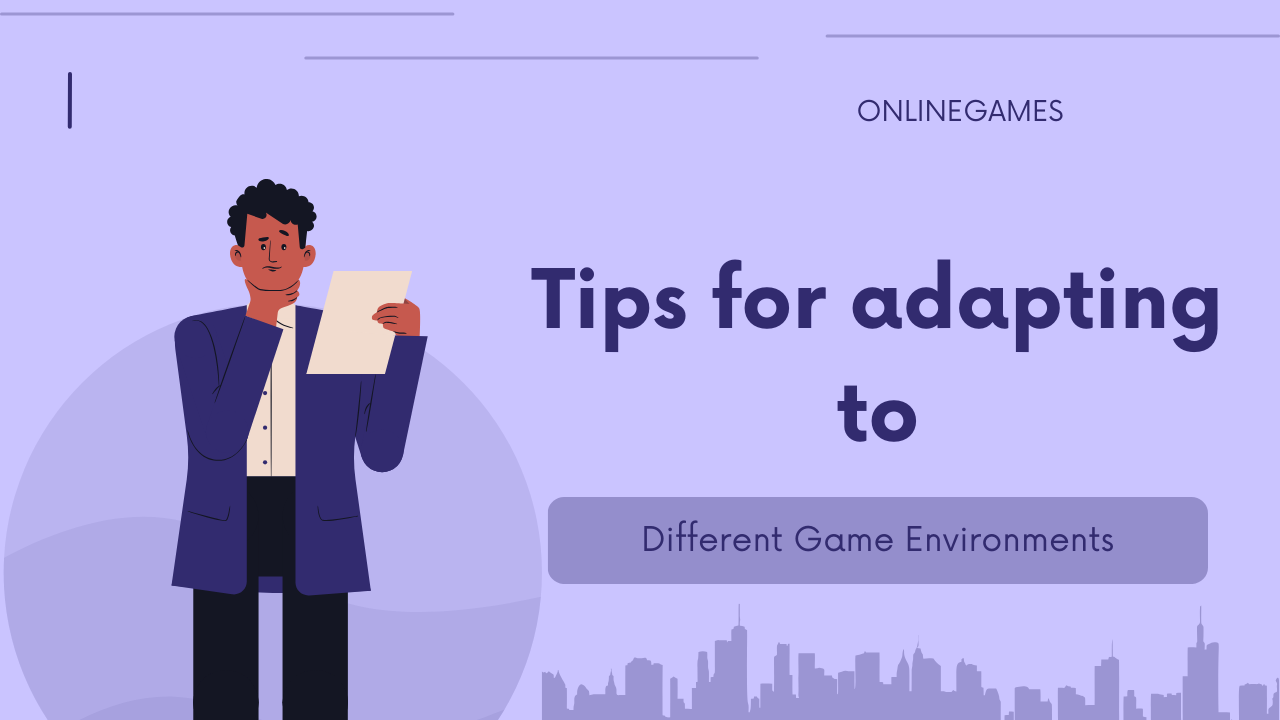Adapting to different game environments is a critical skill for gamers who want to excel across various genres and platforms. Whether you’re transitioning between games with different mechanics, exploring new maps, or facing diverse opponents, mastering adaptability enhances your overall gaming experience. Here are valuable tips to help you adapt effectively to different game environments:
Understand the Game Mechanics
Thoroughly Read Game Guides and Tutorials
Before diving into a new game environment, take the time to familiarize yourself with its mechanics. Read through game guides, tutorials, or in-game manuals provided by developers. Understanding the basic rules, controls, objectives, and unique features sets a solid foundation for adaptation.
Start with Single-Player or Tutorial Modes
Many games offer single-player or tutorial modes designed to introduce players to core gameplay mechanics. Use these modes to practice basic skills, experiment with controls, and gradually acclimate yourself to the game’s environment without the pressure of competition.
Analyze and Observe
Study Maps, Layouts, and Objectives
For games that involve maps or levels, study the layout and objectives before engaging in actual gameplay. Analyze choke points, strategic positions, and potential ambush spots. Understanding the terrain and objectives gives you a tactical advantage and minimizes uncertainty.
Observe Other Players and Learn from Their Strategies
Watch gameplay videos, live streams, or replays featuring experienced players in the game environment you’re entering. Pay attention to their movement patterns, decision-making processes, and strategic approaches. Emulating successful strategies can accelerate your learning curve and improve your adaptation skills.
Adaptation Strategies
Flexibility in Playstyle and Loadout
Be willing to adapt your playstyle and loadout based on the game environment and evolving circumstances. Some games may require aggressive tactics, while others favour a more defensive approach. Experiment with different strategies to find what works best in each situation.
Learn to Counter Opponents’ Strategies
In multiplayer games, opponents may employ diverse tactics and strategies. Anticipate their moves by recognizing patterns and adjusting your approach accordingly. Develop counter strategies to neutralize their strengths and exploit their weaknesses.
Communication and Team Coordination
Effective Communication with Teammates
In team-based games, effective communication is essential for adapting to dynamic environments. Use in-game voice chat or text messaging to coordinate strategies, share information about enemy movements, and synchronize team actions.
Adapt to Team Composition and Roles
Understand your team composition and the roles each player fulfils. Adapt your playstyle to complement teammates’ strengths and cover their weaknesses. Flexibility in role assignments enhances team synergy and increases your chances of success.
Continuous Learning and Improvement
Reflect on Performance and Identify Areas for Growth
After each gaming session, take time to reflect on your performance. Identify areas for improvement such as decision-making, positioning, or reaction times. Continuous self-assessment fosters growth and enhances your ability to adapt to future gameplay scenarios.
Stay Updated with Game Updates and Meta Changes
Games evolve through updates, patches, and changes in meta (popular strategies). Stay informed about these developments by following official announcements, patch notes, or community discussions. Adjust your adaptation strategies accordingly to maintain competitiveness.
Adapting to different game environments requires a combination of preparation, observation, flexibility, and continuous learning. By understanding game mechanics, analyzing environments, adapting strategies, communicating effectively, and striving for improvement, you can enhance your adaptability skills and thrive across various gaming scenarios.










